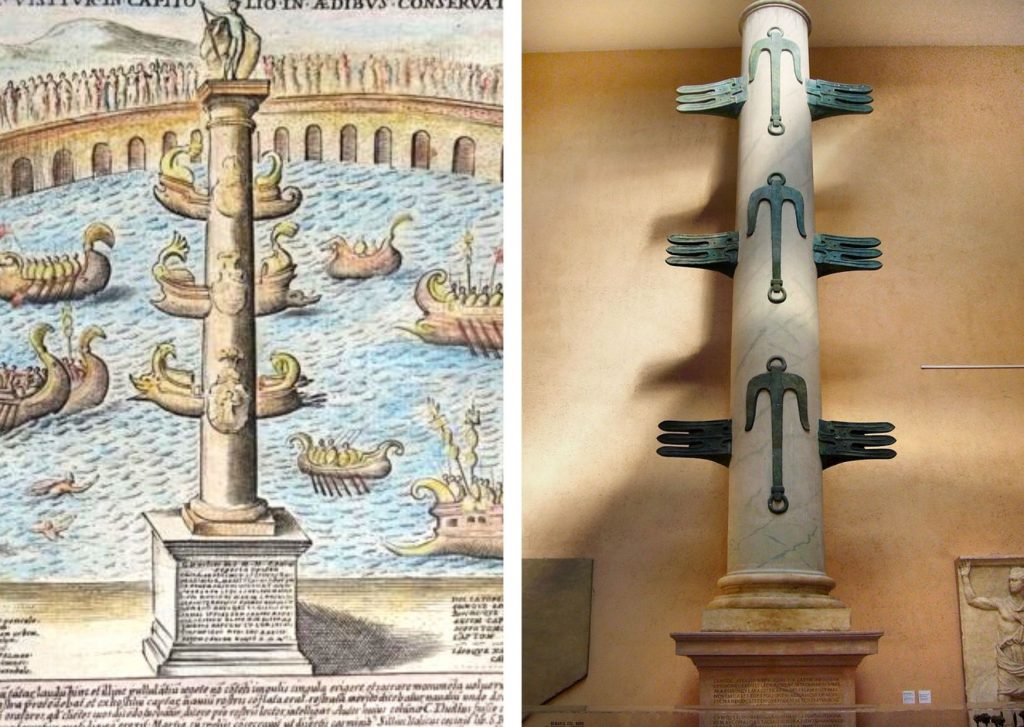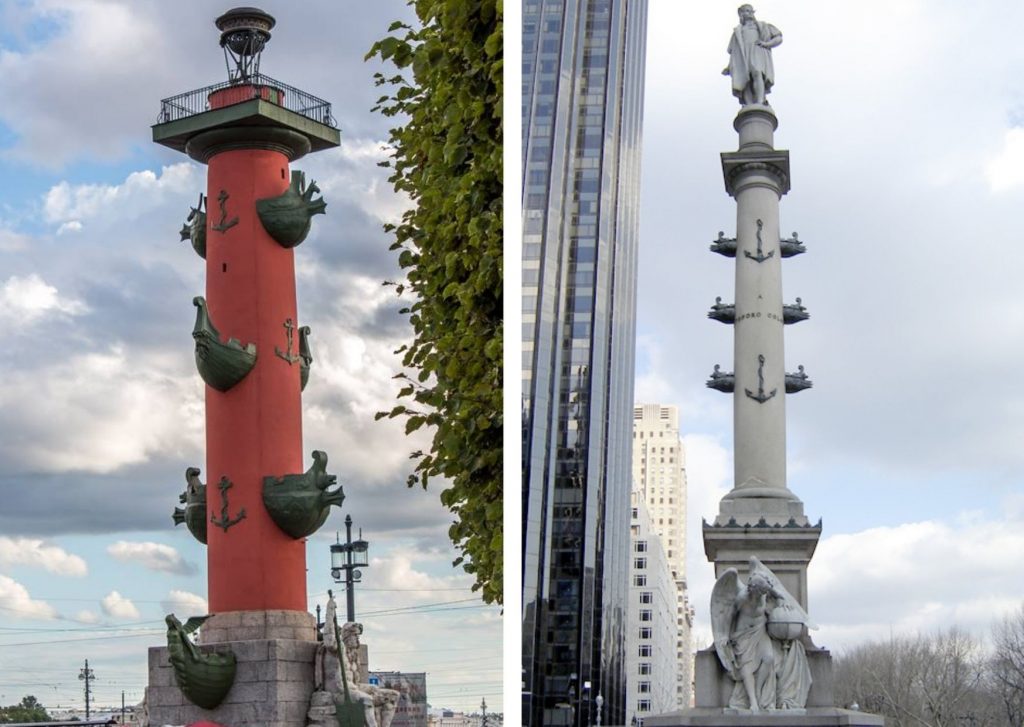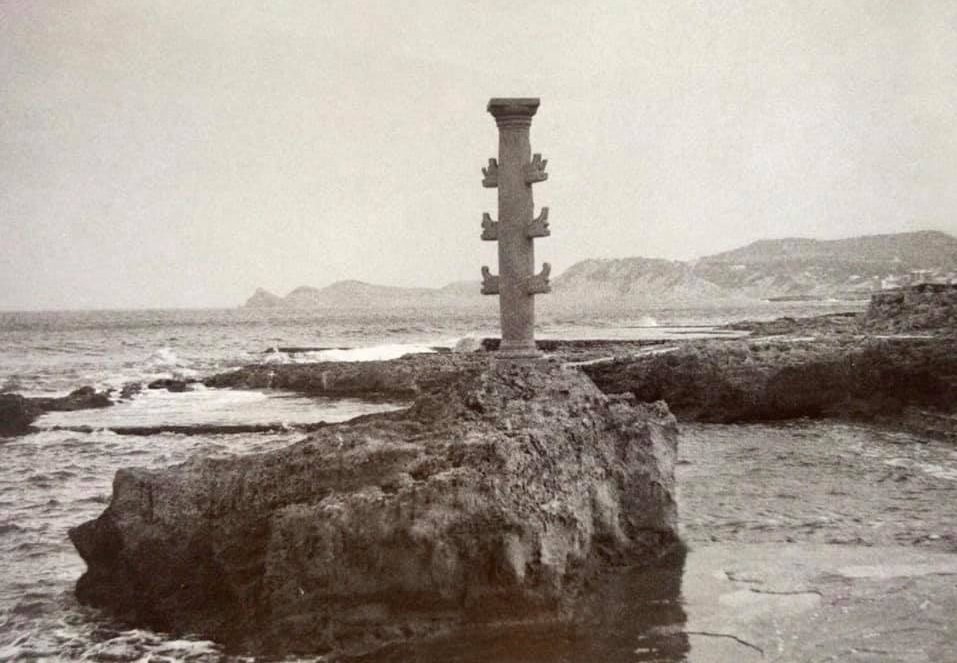The missing column of Cala del Ministro in Xàbia
Historian David Gutiérrez Pulido tells the story of the missing column behind the Parador Hotel.

Base of the rostral column in the Cala del Ministro de Xàbia.
Monday 8th February 2021 | DAVID GUTIÉRREZ PULIDO (Xàbia AL DÍA)
I am sure that many of the people who have enjoyed the waters of the so-called Cala del Ministro, located behind the Parador de Xàbia, will have noticed that there is the base of a column on the natural rock sculpted in tosca stone. This was the base of a commemorative column used as a decoration called the rostral column – or rostrata – which has disappeared.
A rostral column is a commemorative monument in the form of a stone column to which the rostrum, prows or spurs of those ships that were captured or destroyed in a naval battle were attached on the shaft and in a staggered manner. The origin of these columns date back to the Ancient Greeks but it is in Roman culture where this type of memorial is most popular.

The oldest known and preserved rostral columns is the column erected by Gaius Duilio Nepote in 260 BC to commemorate the victory of Rome against the Carthaginians in the battle of Milae and the rostral columns of Augustus erected in 36 BC in the forum of ancient Rome. Over time, these columns served as a model to create commemorative monuments or simply as decorative elements such as the rostral columns of St. Petersburg erected in 1810 to commemorate Russian naval victories or the monument in Columbus Circle in New York, a space that marks the discovery of America by Christopher Columbus, his statue raised on a rostral column.

Well, in Xàbia there was also a rostral column erected by a private initiative headed by Mariano Navarro Rubio, Minister of Finance between 1957 and 1960, who was granted the public land of the Punta del Arenal and decided to build a summer chalet on the ruins of a fishing factory dating from Roman times. His wife, María Dolores Serres, was a budding archaeologist Sena, chose this site in which archaeological excavations were carried out, the results of which were published in 1970 under the title “La factoría pesquera de Punta de l’Arenal y otros restos romanos de Javea (Alicante)“.

The question is that, perhaps, the fruit of this archaeological passion and the taste for the classical world was what led this couple to incorporate in the garden and around the natural pools created between rocks and walks, a series of sculptural elements commissioned to the tosqueros and also sculptors Francisco Cholbi Caselles and Juan Bautista Devesa. And among these sculptural elements they made the present rostral column in Doric style, incorporating the imitation of six ship spurs, three on each side of the shaft.
The column remained standing until 1980, when a strong storm (or a DANA as it would be called now) smashed against the coast of Xàbia causing great damage, and among these damages, the force of the sea broke the column and a visual landmark of the coast and the tip of Arenal was lost. Only its square base and the ring at the base of its column decorated with plant motifs remain for your memory1.
1 My thanks to Vicent Catalá Gisbert for providing some information on this column.
Click below to read this story in Spanish on Xàbia AL DIA





